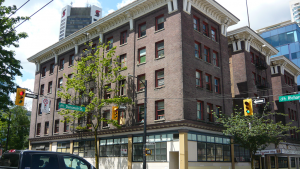A new construction and demolition bylaw is coming into effect in Burnaby, B.C., this fall which is aimed at encouraging builders and developers to divert discarded materials from landfills to recycling facilities.
Contractors who carry out demolitions will be required to pay a non-refundable application fee of $250 and a deposit of $2.25 per square foot of the building being demolished, with a maximum deposit cap of $50,000.
Once the project is complete, builders or contractors will receive a refund calculated on the percentage of waste diverted to the proper recycling channels in the region. The entire deposit amount will be refunded for demolitions that divert 70 per cent or more of their waste.
The bylaw comes into effect Oct. 1 for contractors who do demolitions of multi-family dwellings and non-residential industrial, commercial and accessory buildings and March 1, 2023, for all demolitions of single-family and two-family dwellings and related accessory buildings.
“The waste diversion deposit incentivizes the builder or developer to make adjustments to their work process in order to divert materials and achieve the compliance rate of 70 per cent and receive their refund,” explains Tracey Tobin, climate action and energy officer at the City of Burnaby.
“Materials such as wood waste, when disposed of in a landfill, breaks down under an anaerobic environment. When this material breaks down, it produces methane, a greenhouse gas that is 21 times more impactful to climate change than CO2.”
Adoption of the new bylaw is the latest action Burnaby City Council is taking to implement big moves identified in the city’s 2020 Climate Action Framework.
The plan is to move to a 45-per-cent reduction in 2010 carbon emissions by 2030, a 75-per-cent reduction by 2040 and carbon neutrality by 2050. The bylaw is being phased in to give the development community time to adjust.
Diverting wood, metal and concrete to recycling facilities is seen as a vital step in reducing the greenhouse gases the materials emit when not disposed of correctly.
“Buildings contribute a large part of our greenhouse gas emissions, not just in the construction and day-to-day operations, but also at their end of life,” says Tobin. “From waste composition audits conducted by Metro Vancouver, it has been found that 25 to 30 per cent of waste being disposed is generated by construction and demolition by sector. Of this, more than half is recyclable and about 60 per cent is comprised of wood and mineral aggregates.
“Keeping these materials out of the landfill and reusing or recycling these materials supports not only Burnaby’s GHG emission reduction, but also regional emission reduction goals. Further, the bylaw is in line with regional waste reduction goals and supports current material disposal bans.”
As Tobin notes, there is value for builders to shift to diversion, as many of the materials produced from demolition can already be recycled, reused and some, such as metal, has monetary value.
Disposal costs at landfills, meanwhile, are also increasing whereas costs for diversion through recycling is lower.
“There are built-in incentives already for builders,” she says. “The new bylaw supports these incentives.”
There are requirements for the building community to submit a waste diversion plan at the point of application for demolition. The plan will outline the types and amount of materials that may be generated from the demolition.
After demolition is complete, the builder would be responsible to submit a waste diversion compliance report, and provide copies of supporting documents such as weigh bills and receipts to show how much material was recycled and where it went. The deposit refund will be calculated using the information and a specific formula.
In advance of the bylaw coming into effect, the city is educating the industry about the program.
“The city has pushed out communication to a number of stakeholders within the buildings community, as well as internally to key staff that have touch points with our development community,” says Tobin. “We have provided a template waste diversion plan and compliance report to be used that is a user-friendly, auto-fillable PDF and auto-calculating.”
The city also has a dedicated website with links to regional resources for planning demolition projects, information on facilities that accept the materials, and tools such as a waste generation calculator to help in the planning process.











Recent Comments
comments for this post are closed